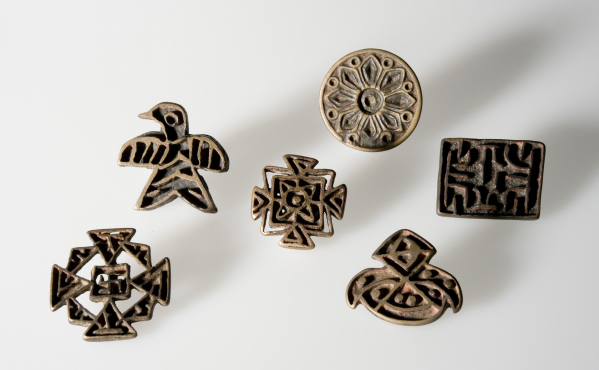Media
HKU to present the world’s largest collection of
“Nestorian Crosses of the Yuan Dynasty”
05 Jun 2015
The University of Hong Kong (HKU) has the world's largest collection of 979 pieces of Yuan dynasty (1271-1368) Nestorian Crosses. Over 700 of them will be exhibited at the University Museum and Art Gallery (UMAG) from June 10, 2015 onwards. A series of events will be in place which includes a three-day international conference on the Jing Jiao Nestorianiam from June 10 to 12, to be held at HKU and the Chinese University of Hong Kong, to mark the 1380th anniversary of the introduction of Jing Jiao to China; as well as public talks on “What does the Jing Jiao, or Church of the East in China, Means for Us Today?” by Rev Ephraim Alkha of the Church of the East (June 10), and “Christianity in China in the Tang and Yuan Dynasties” (June 13).
A media briefing will be held on June 8 (Monday) to introduce the HKU collection of Yuan Dynasty Nestorian Crosses, their stories, and the history and development of Jing Jiao. The speakers included HKU Professor of Architecture Professor David P.Y. Lung, Dr. Fung Kam-wing of the School of Chinese, and UMAG Director Dr Florian Knothe.
Details of the media briefing:
Date: Jun 8, 2015 (Monday)
Time: 2:30pm
Venue: 1/F, Fung Ping Shan Building, UMAG, 90 Bonham Road, Pokfulam
HKU’s Nestorian crosses were assembled by Mr. F. A. Nixon who served as a British postal commissioner in Beijing in the 1930s and 1940s. Subsequently the collection was acquired by the Lee Hysan Foundation and donated to the University in 1961.
Nestorian Christianity was introduced to China in the Tang dynasty from Persia (today’s Silk Road). The religion, known as Jing Jiao in China, went into decline after the Tang dynasty, and was once again revived in 1289 in the Yuan Dynasty. The F. A. Nixon Collection of Nestorian Crosses is the archaeological discovery of this period from the Mongolian steppes.
Stylistically, all crosses fall into four different categories, many with mixed Christian and Buddhist motifs in the same artefact. The majority are executed in crucifix form. Other ‘crosses’ in fact take the shape of animals, predominantly birds, but also hares and fish, as well as geometrical patterns, such as sun-like designs and miscellaneous Chinese seal-like forms.
Nestorian bronze crosses were cast in the Ordos region in north-west China (Inner Mongolia) during the Yuan dynasty (1272–1368). They measure between 3 and 8 cm in height. The crosses all seem to be unique and are, in fact, characteristic for their individual designs, suggesting that each design may have represented an individual owner, family or group.
For media enquiries, please contact: Ms Julie Chu, Knowledge Exchange Officer, Communications and Public Affairs Office, HKU, at tel: (852) 2859 2437, email: juliechu@hku.hk.

